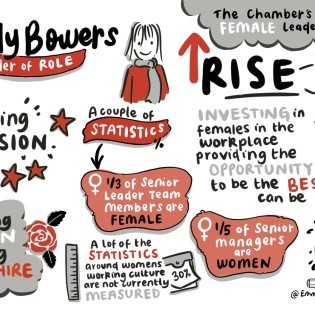Spotting Workplace Burnout Before It’s Too Late
Burnout isn’t just an over-used catch phrase; it’s a legitimate issue that can affect your employees and ultimately impact your organisation’s success. In today’s constantly changing work environments, understanding how to recognise the early warnings of burnout is essential for fostering a healthy, engaged workplace.
According to a recent report from Deloitte, nearly 77% of employees have experienced burnout at least once during their careers. Proactively supporting your team’s well-being isn’t only about preserving productivity—it’s about showing that you value them as people, not just as job titles.
Here are eight critical signs to watch for and preventative measures you can adopt to curb burnout before it takes root.
1. Declining Productivity
An employee who was once a go-getter now seems to struggle with even the simplest tasks. Declining productivity isn’t just about lack of motivation—it’s often a glaring sign of emotional and physical exhaustion.
Burnout can lead to reduced cognitive function, slower work output, and errors in tasks they would normally handle with ease. If someone’s to-do list keeps growing with little progress, it’s a major red flag.
2. Increased Absenteeism
Sick days may start piling up as burnt-out employees grapple with stress-related physical and mental health challenges. Fatigue and anxiety take a physical toll, leaving them more vulnerable to illnesses or workplace avoidance.
Excessive absenteeism doesn’t just raise overhead costs; it places undue pressure on other team members, potentially creating a cascading effect of disengagement throughout the workplace.
3. Emotional Detachment
Your once-enthusiastic colleagues now seem aloof or disconnected during meetings. Emotional detachment often stems from chronic stress, leading employees to “switch off” as a survival mechanism.
Workplaces brimming with enthusiastic and energised employees thrive. However, emotional detachment suggests that your team isn’t just tired—they’re mentally checked out.
4. Uncharacteristic Irritability
Have you noticed someone snapping more often or getting frustrated over minor issues? A typically calm employee who increasingly struggles with patience might be showing signs of burnout. Irritability is often a response to overstimulation and feeling overwhelmed.
Unchecked stress can bubble over, creating rifts between employees or reduced team cohesion. Left unaddressed, this tension can spread, diminishing workplace harmony.
5. Poor Sleep Quality
Burnt-out employees often struggle with sleep. Whether it’s insomnia, waking multiple times a night, or feeling unrested, poor sleep quality exacerbates stress levels and significantly hinders overall performance.
According to the Sleep Foundation, lack of rest leads to a 32% decline in productivity. Prolonged exhaustion increases health risks, too, such as cardiovascular issues, chronic fatigue, and impaired immune response.
6. Loss of Creativity and Problem-Solving Skills
Burnout drains more than energy—it dampens creativity. If someone who usually contributes innovative ideas to brainstorm sessions suddenly goes quiet, burnout might be at play. Problem-solving and out-of-the-box thinking often falter when individuals are overwhelmed.
It’s not simply about a “bad week” at work. Sustained burnout can make creative employees second-guess themselves, even in areas they once excelled.
7. Physical Symptoms of Stress
Recurring headaches, digestive issues, muscle pain, or illnesses can point to burnout. Constant stress manifests physically, and employees might not even connect the dots between ongoing discomfort and workplace strain.
It’s important to approach physical symptoms holistically. Ignored, these can compound and lead to serious health concerns.
8. Extreme Perfectionism or Procrastination
Burnout impacts motivation differently for everyone. For some, it drives extreme perfectionism, where employees become paralysed by the prospect of making a mistake. For others, it results in procrastination—the pressure to succeed becomes so daunting that tasks are endlessly delayed.
Both approaches negatively influence not just individual output but team dynamics. Collaboration can falter when certain members fail to deliver on expectations or agonise over tiny, irrelevant details.
Building a Burnout-Free Culture
Burnout isn’t inevitable—it’s preventable. Organisations that invest in wellness initiatives as part of the wider wellbeing workplace culture see the rewards reflected through improved engagement, productivity, and worker satisfaction.
Focusing on practical wellbeing measures can give your employees the tools they need to thrive personally and professionally. Happy, healthy workplaces positively influence everyone—from employees to bottom-line profits.
Encouraging continuous dialogue and embedding services that nurture both body and mind will set your business apart as a genuinely supportive employer.
Burnout can be a life limiting illness, that takes months to recover from. If you are personally experiencing multiple symptoms mentioned above we recommend booking an appointment with your GP. For more information on how to protect your teams from burnout, and building a culture of health and happiness contact Cheryle Britton at YOLO Wellbeing Ltd. www.yolowellbeing.co.uk/contact for more information.























